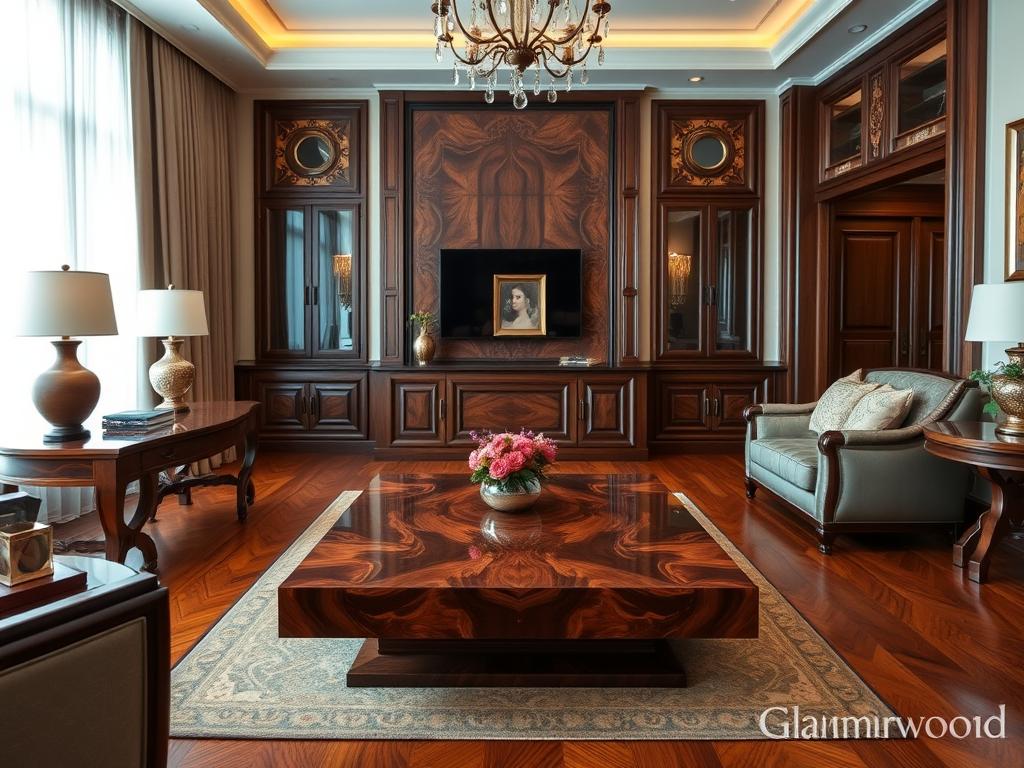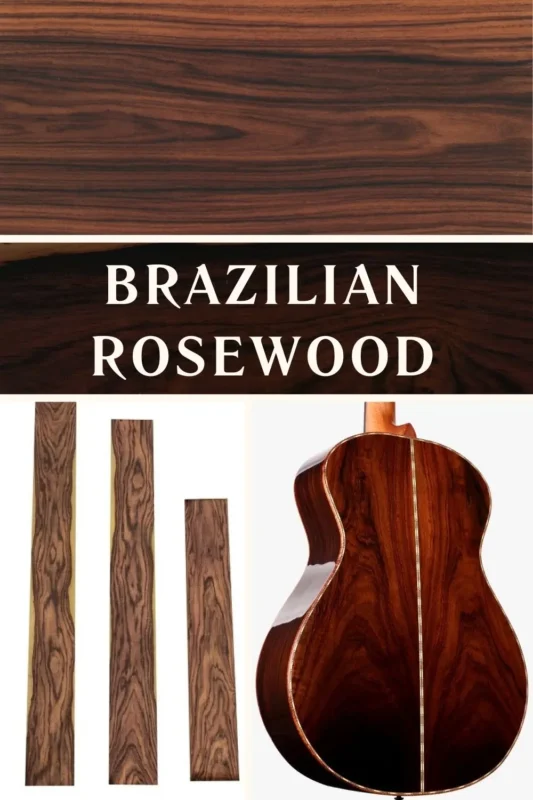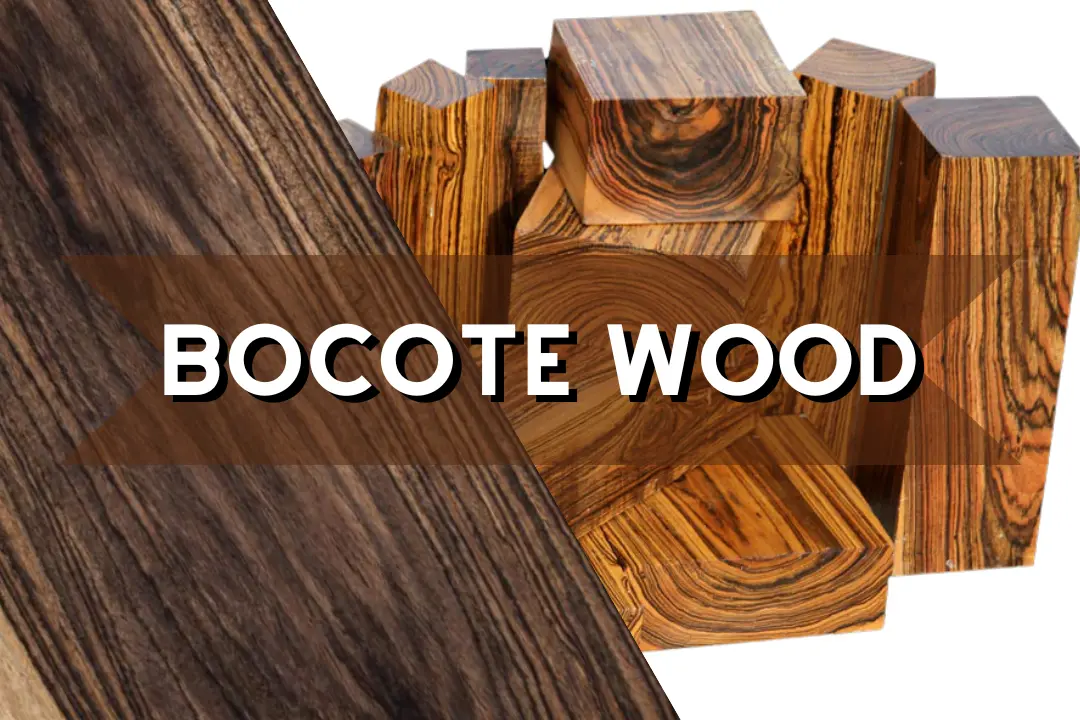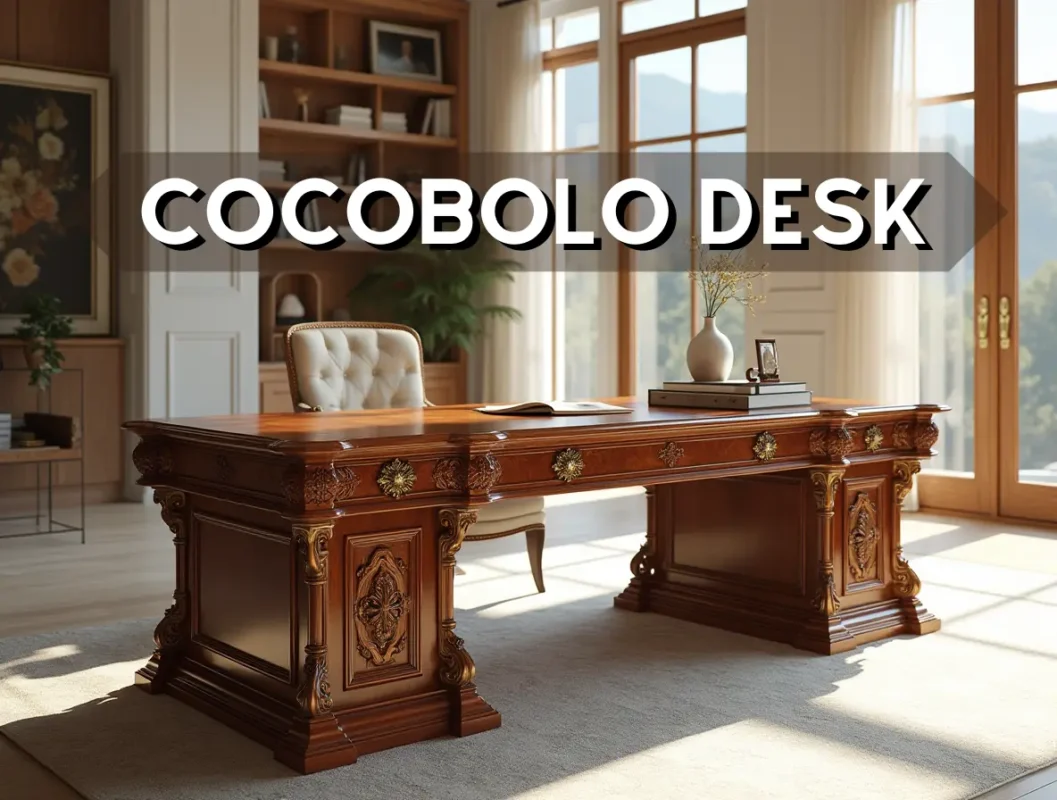
Did you know Brazilian rosewood, known as Dalbergia nigra, is highly sought after worldwide? It’s known for its deep reddish-brown color and unique grain patterns. This wood is a symbol of luxury and fine craftsmanship.
It’s often used in making heirloom furniture and musical instruments. Brazilian rosewood is prized for its durability and beauty.
This article dives into Brazilian rosewood’s amazing qualities. We’ll look at its history, use in interior design, and how it’s sourced sustainably. As we focus on sustainable wood, learning about Brazilian rosewood is important for artists, designers, and eco-friendly buyers.
Table of Contents
Introduction
Brazilian rosewood, known scientifically as Dalbergia nigra, is a highly valued hardwood. It’s celebrated for its beautiful looks and outstanding qualities. This wood is key in luxury woodworking and music, blending skill with creativity.
Its colors range from brick red to dark brown, captivating woodworkers. The unique features of this rare tropical wood make it popular for high-end furniture and musical instruments. Its unique grain patterns add to its beauty, making each piece a work of nature’s art.
In luxury woodworking, Brazilian rosewood has shaped the making of famous guitars. Guitars like the Martin D-28 show its impact during the 1930s and 1940s. This wood gives guitars a loud, warm, and rich sound, enhancing their acoustic quality.
What is Brazilian Rosewood?
Brazilian rosewood, known scientifically as Dalbergia nigra, is a rare and highly valued wood. It comes from the Atlantic coastal rainforests of Brazil. This wood is part of the Fabaceae family and is sought after for its rarity and quality.
Scientific Classification
Brazilian rosewood is listed as an endangered wood species. It was added to the CITES Appendix I in 1992. This means finished products made from it can’t be exported, making it even more valuable.
The tree is found only in Brazil, mainly in the eastern states. It has a specific gravity of 0.84, which is slightly less than water. This makes it ideal for woodworking.
Physical Characteristics and Appearance
Rosewood Brazilian has a reddish-brown color with dark streaks and intricate grain patterns. This unique look makes it perfect for luxury furniture and musical instruments. The wood is very dense and hard, adding to its durability.
Its natural shine enhances the beauty of any room. It brings timeless elegance to any space.
| Characteristic | Rosewood Brazilian | East Indian Rosewood |
|---|---|---|
| Scientific Name | Dalbergia nigra | Dalbergia latifolia |
| Average Weight | 52 lbs/ft3 (835 kg/m3) | 52 lbs/ft3 (830 kg/m3) |
| Pore Density | Lower | Higher |
| Fluorescence under Blacklight | No | Yes |
Historical Significance
Brazilian rosewood is more than just beautiful and valuable. It’s a key part of Brazil’s culture and history. Since the 16th century, it’s been loved for its sound in acoustic guitars. By the 19th century, it was the top choice for its rich, vibrant sound.
Origins and Cultural Background
This rare tropical wood comes from Brazil’s lush forests. It’s prized for its beauty and strength, used in top furniture and cabinets. Its use in luxury items shows off Brazil’s skill and pride in craftsmanship. But, it’s facing big problems due to too much use and land changes.
Brazilian Rosewood in Craftsmanship
Brazilian rosewood has inspired many beautiful items. It was key in making luxury furniture for royal homes and fancy houses. It was also used in van conversions in the 1970s and ’80s. Today, it’s still used in guitars, like those made by Breedlove Guitars. These guitars show off the wood’s beauty and the skill of Brazilian craftsmanship.
| Year | Event | Significance |
|---|---|---|
| 16th Century | Acoustic guitar industry emergence | Beginning of Brazilian rosewood’s fame |
| 19th Century | Establishment as preferred tonewood | Standard for acoustic guitars |
| 1967 | Export ban on logs | Government response to species decline |
| 1992 | CITES listing as endangered species | International regulation for its trade |
| Present | Breedlove Guitars collection | Market for legally documented rosewood |
Applications of Brazilian Rosewood in Interior Design
This exotic rosewood is a luxury wood known for its beauty and function. It has a rich color and unique grain, making it perfect for creating timeless pieces. Its elegance in furniture and flooring makes it a top choice for those who value quality.
Furniture Making
Brazilian rosewood furniture is a standout for its craftsmanship and beauty. Its grain patterns and colors are ideal for making unique pieces like:
- Dining tables
- Cabinets
- Accent pieces
These items are not just functional but also add to the room’s ambiance. They fit various styles, from traditional to modern, making them versatile.
Flooring and Wall Panels
Brazilian rosewood is also great for flooring and wall panels. Its durability adds to its beauty. Flooring made from this wood brings warmth and character to any space.
- Natural beauty and elegance
- Long-lasting durability
- Comfort underfoot
Its resistance to wear makes it perfect for busy areas. Using this exotic rosewood for flooring and panels shows a commitment to quality and style.

| Characteristic | Detail |
|---|---|
| Average Dried Weight | 52 lbs/ft3 (835 kg/m3) |
| Janka Hardness | 2,790 lbf (12,410 N) |
| Modulus of Rupture | 19,570 lbf/in2 (135.0 MPa) |
| Elastic Modulus | 2,020,000 lbf/in2 (13.93 GPa) |
| Crushing Strength | 9,740 lbf/in2 (67.2 MPa) |
| Shrinkage Rates | Radial: 2.9%, Tangential: 4.6%, Volumetric: 8.5% |
Brazilian Rosewood: Properties and Benefits
This exotic rosewood is known for its amazing properties and benefits. It’s a favorite among artists and musicians. Its durability and beauty make it a top choice.
Durability and Longevity
Brazilian rosewood is incredibly durable. It can last for many years, even with heavy use. This makes it perfect for furniture and decorations that will last for generations.
Unique Aesthetic Appeal
The beauty of this exotic rosewood is unmatched. It has stunning patterns and deep colors. This makes any item it’s used in look luxurious and eye-catching.
Acoustic Qualities for Musical Instruments
For musicians, Brazilian rosewood is a dream. It’s great for making instruments because it improves sound quality. Guitars and pianos made from it have a unique sound that musicians love.
| Property | Benefit |
|---|---|
| Durability of Rosewood Brazilian | Long-lasting furniture and fixtures |
| Aesthetic value | Striking visual appeal in any setting |
| Acoustic properties | Enhanced sound quality in musical instruments |
Environmental Considerations and Sustainability
Today, people think more about what they buy. Sustainability and responsible sourcing are key in the timber world. Using this richly grained wood shows how important it is to get it from certified places. This helps keep the trees’ homes safe.
By using the Forest Stewardship Council (FSC), the industry supports good practices. This helps protect Brazilian rosewood and the environment.
Sourcing and Certification for Sustainability
The lumber world must focus on responsible sourcing to save Brazilian rosewood. FSC certifications show that suppliers follow the best rules. This is crucial for keeping things green.
As logging worries grow, getting wood from well-managed forests is key. It lets makers create without harming nature.
Impacts of Logging on the Environment
Illegal logging and too much cutting hurt Brazilian rosewood and the environment. It makes these trees rare and messes up nature. Good practices can lessen harm and keep this wood for the future.
Knowing how logging affects the planet pushes producers to choose better wood. This helps save many species.

| Practice | Impact | Outcome |
|---|---|---|
| Responsible Sourcing | Minimizes ecological damage | Long-term viability of Brazilian rosewood |
| FSC Certification | Promotes sustainable harvesting | Conserves biodiversity and forest health |
| Awareness Campaigns | Educates consumers | Drives demand for sustainable products |
Comparing Brazilian Rosewood with Other Exotic Woods
This richly grained wood stands out among exotic woods for its unique traits. It has a rich look and feel that sets it apart. When compared to Bubinga, Wenge, and Mahogany, its beauty shines through.
Differences with Bubinga and Wenge
Bubinga has a different color and sound than Brazilian rosewood. It’s attractive but doesn’t match the rosewood’s luxury look. Wenge is darker and stronger, but rosewood’s patterns and warmth are unmatched.
This makes rosewood perfect for high-end furniture and instruments.
Suitability of Brazilian Rosewood versus Mahogany
Brazilian rosewood beats Mahogany in beauty and durability. Both are great for luxury items, but rosewood’s look and lasting quality are better. Mahogany is lighter and has a bright sound, used in some furniture and instruments.
Care and Maintenance
Proper care is key to keeping these luxurious hardwood products looking great. Cleaning, polishing, and preventive steps are important. They help keep the wood’s beauty and protect it from damage.
Cleaning and Polishing Techniques
Start with regular maintenance for effective wood care. Clean surfaces with a soft, damp cloth and avoid harsh chemicals. For a deeper shine, apply high-quality wood polish periodically. This boosts the wood’s natural glow and adds protection.
By following these tips, you’ll make your Brazilian rosewood pieces last longer.
Preventing Damage and Wear
To keep Brazilian rosewood in top shape, avoid direct sunlight. It can cause fading and cracking. Also, manage humidity levels to prevent shrinkage or warping.
Always use coasters or pads when placing hot or wet items on the wood. These steps help protect the surface and keep it looking good over time.
| Care Aspect | Maintenance Tips | Frequency |
|---|---|---|
| Cleaning | Use a soft, damp cloth | Weekly |
| Polishing | Apply high-quality wood polish | Monthly |
| Sunlight Protection | Avoid direct sunlight exposure | Ongoing |
| Humidity Management | Adjust humidity levels in the environment | Ongoing |
| Surface Protection | Use coasters under hot/wet items | Always |
Common Myths
Many myths surround Brazilian rosewood, confusing both consumers and enthusiasts. It’s important to debunk these myths to truly appreciate this wood. One common myth is that Brazilian rosewood is easy to find and source. This is far from true, as it’s rare due to strict sustainability and legal rules.
Dispelling Misconceptions
Some think Brazilian rosewood is common in woodworking because of its beauty. They believe it’s easy to find. But this luxurious hardwood is a CITES Appendix I wood, meaning its trade is heavily regulated. This is because of worries about overlogging and environmental damage.
Also, instruments made from Brazilian rosewood are not just about looks. There are real concerns about the paperwork needed for these instruments. People say Brazilian rosewood is very durable, lasting for years. But, buyers need to be careful about where they buy it.
Understanding Its Value in the Market
The price of this luxurious hardwood can change a lot. Some pieces are very expensive, while others are surprisingly cheap. For example, a standard Brazilian rosewood board is 74”L x 11”-12”W x 1” T, making it valuable for high-end projects.
In lutherie, a “set” means a selection of pre-cut parts, important for makers. Special instruments, like the SRV Stratocaster, show how much people love Brazilian rosewood. Only about 100 SRV Stratocasters have Brazilian rosewood fingerboards, making them very rare. These instruments can cost up to $18,000.
The move to use Pau Ferro instead also shows how the market changes. Knowing these changes helps us see why Brazilian rosewood is so valuable. It also clears up common myths about finding and using it.
| Factor | Details |
|---|---|
| Classification | CITES Appendix I, highly restricted trade |
| Standard Board Size | 74”L x 11”-12”W x 1” T |
| Market Value Range | Exorbitant to surprisingly low prices |
| SRV Stratocaster Details | Less than 100 units with Brazilian rosewood fingerboards |
| Collector Prices | Up to $18,000 for premium models |
| Alternative Materials | Switch to Pau Ferro due to sustainability |
Conclusion
Brazilian rosewood is truly special. It has beautiful qualities and timeless elegance that many love. It’s known for its rich history and use in making fine musical instruments.
Guitars made from Brazilian rosewood are famous for their sound. They have a unique warmth and quality that stands out. This makes them highly valued.
But we must talk about how we get and use Brazilian rosewood. It’s a rare and vulnerable species. We need to use it wisely to keep it safe for the future.
Using it in a way that’s good for the planet is key. This way, we can enjoy its beauty and value while protecting it. It’s up to us to make sure it’s used right.
The story of this luxurious hardwood is one of beauty and care. It shows how art and nature can come together. By caring for it, we help keep its beauty alive for years to come.
FAQs
What makes Brazilian rosewood a preferred choice for high-end furniture?
Brazilian rosewood is loved for its rich color, durability, and unique grain patterns. These qualities make it beautiful and long-lasting. It’s a top pick for creating furniture that lasts for generations.
How does Brazilian rosewood compare to other exotic woods like Bubinga and Wenge?
Brazilian rosewood is special because of its striking grain patterns and deep reddish-brown color. It’s not like Bubinga or Wenge, which have different looks and uses. Its beauty and function make it very sought after.
What are the acoustic qualities of Brazilian rosewood that enhance musical instruments?
Brazilian rosewood is prized in music for its amazing sound quality. It adds richness and resonance to instruments like guitars and pianos. This makes the sound better.
What sustainability practices should be considered when sourcing Brazilian rosewood?
It’s important to buy from certified suppliers, like those with Forest Stewardship Council (FSC) certification. This ensures the wood is harvested responsibly. It helps protect the environment and the trees.
What common myths exist about Brazilian rosewood?
Many think Brazilian rosewood is easy to find and buy. But it’s actually rare and hard to get. This is because of concerns about its sustainability.

















